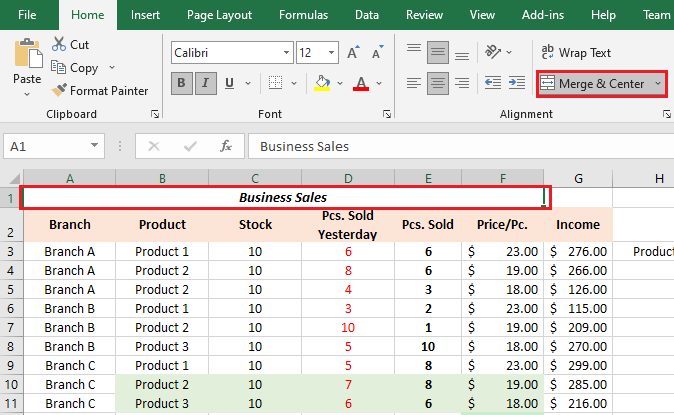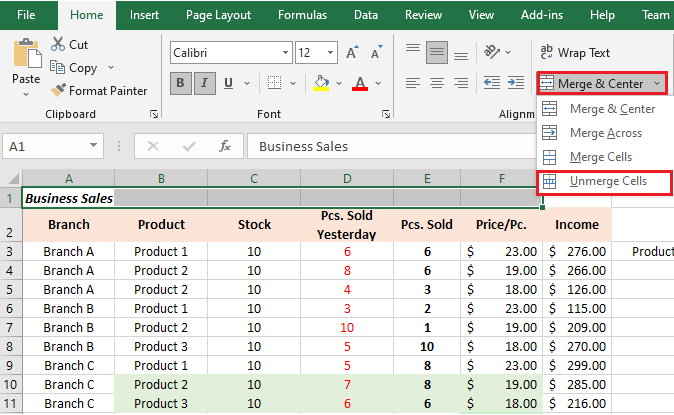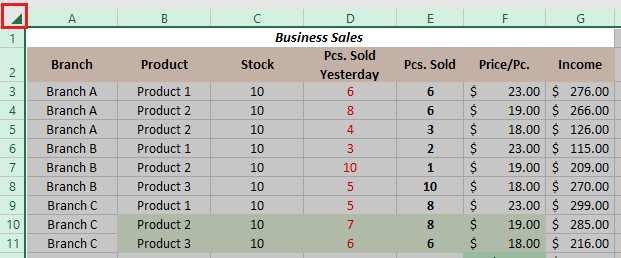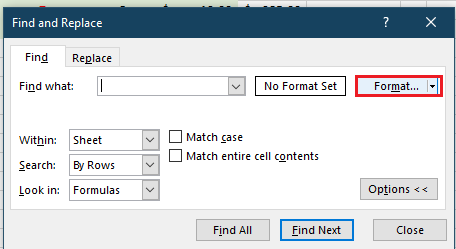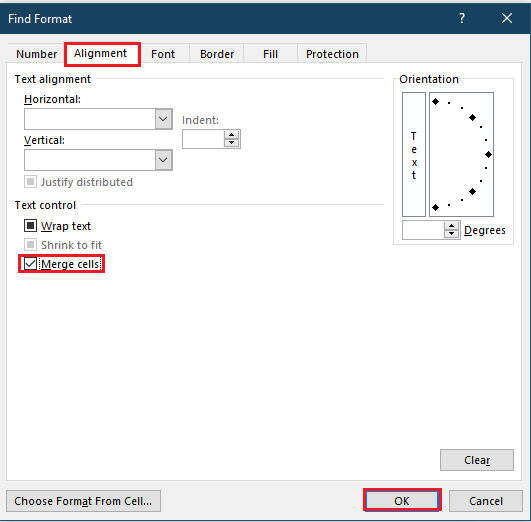This tutorial you will know how to unmerge Cells in Excel, it shortcuts and how to find all merged cells in a worksheet. Along with we will learn also how to split all merged cells.
It is inevitable to combine related data into a single cell for comparison and alignment. However we realize merging cells limits the performance in doing a simple task in a worksheet. For instance, we in sorting data in a column and it couldn’t be done. Even filtering data in the column or selecting it is one of the conflicts also.
Hence unmerging cells come in…
How to find all merged cells in a worksheet
Unmerging cells in Excel is easy. Just follow the following steps:
- Select cells or range desired to unmerge.

- In your Home tab find the alignment group and click Merge and Center.
Another option is clicking the dropdown arrow on the Merge and Center button and selecting Unmerge cells. Either of the two options you can use to unmerge cells.

By default, the merged cell will be placed in the upper left cell or other cells are left empty.
Shortcut to Unmerge cells in Excel
Another quickest way to unmerge cells is to use a keyboard shortcut.
Below is the keyboard shortcut we can use.
ALT + H + M + C
Just press the keyboard keys in succession one after another. The above shortcut would instantly unmerge all the merged cells in the selected range.
How to split all merged cells in a worksheet
Splitting all merged cells seems like a hassle work but actually, it is just a mouse click.
To do this follow the following steps:
- Ready your worksheet and Select the entire data. Either on the worksheet, you can click the small triangle in upper left corner or simply Press CTRL + A.

- After selecting the entire cells observe the Merge and Center buttons.
- If the Merge and Center is highlighted then click to unmerge cells.
- If the Merge and Center button is not highlighted then there are no merged cells.
How to find merged cells in Excel
After knowing how to merge cells in Excel but somehow when we are given a poorly structured worksheet. Wherein contains a fairly big amount of merged cells you don’t know about.
Hence how to find merged cells? as we all know that merging cells is relevant for alignment and formatting.
So here’s how:
1. Simply press the CTRL+F in opening the dialog box, other option is in the Home tab find the Editing group and click Find and Select, then select Find.
2. When the find and replace dialog box open, select the Options button and Click Format…
3. Go to the Alignment tab, then checked the Merge cells check box under Text control, and click OK.
4. Afterward, click either:
- Find All — to result list of all merged cells.
- Find Next — to get to the next merged cell.
Accordingly, after clicking one of the items, then the corresponding merge cell in the worksheet will be selected.
Tips: When you are just curious if there are any merged cells in your selected range, just take a glance at the Merge and Center button if it is highlighted. If there’s emphasized then there is at least one merged cell in a particular range.
How to merge and unmerge cells in excel
The function merge cell in Excel allows us to create a single cell with multiple rows and columns. Apparently, this is useful in times we need to create a text box or large area in displaying the data.
Consequently, we need to unmerge in certain circumstances when such as using data functions. Generally, there are methods to perform unmerge cells wherein we are going to use the excel ribbons and keyboard shortcuts which are already explained above.
Conclusion
In conclusion, how to unmerge cells in excel is crucial particularly when sorting and filtering data. However, because it is relevant to alignment and formatting it is still good to use it despite of its limitations.
That’s all for today’s article. Thank you for reading 🙂


